The Complete Guide to Agentic AI Frameworks: Code vs No-Code Solutions for 2025
The world of artificial intelligence has evolved dramatically, and we’re now witnessing the rise of agentic AI frameworks that enable developers and non-technical users alike to build sophisticated AI applications. Whether you’re a seasoned developer or someone who prefers visual, drag-and-drop interfaces, there’s an agentic AI framework designed for your needs.
In this comprehensive guide, we’ll explore both code-based and no-code frameworks, helping you understand which solution best fits your project requirements, technical expertise, and organizational goals.
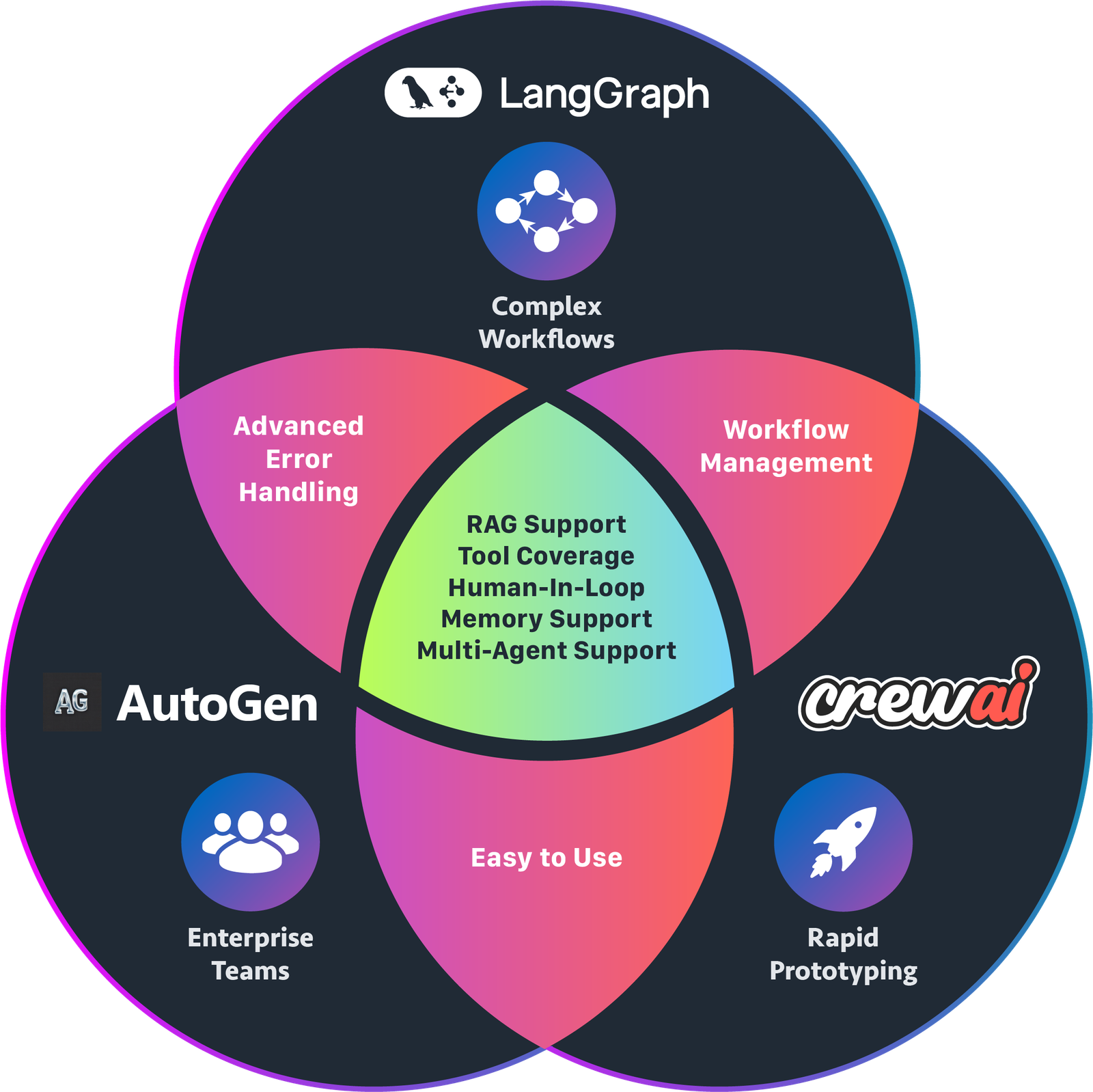
Understanding Agentic AI Frameworks
Agentic AI frameworks are specialized tools and platforms that enable the creation of autonomous AI agents capable of performing complex tasks, making decisions, and collaborating with other agents. These frameworks provide the infrastructure needed to build applications where AI agents can reason, use tools, maintain memory, and execute multi-step workflows.
The landscape of agentic AI frameworks can be broadly categorized into two main types: code-based frameworks that require programming expertise, and no-code platforms that enable visual, drag-and-drop development. Both approaches have their merits and are suited for different use cases and user types.
Code-Based Agentic AI Frameworks
For developers who prefer full control and customization, code-based frameworks offer the flexibility to build sophisticated agentic applications. Let’s explore the most prominent options available today.
1. Agno: The Lightning-Fast Framework
Agno stands out as a lightweight and exceptionally fast framework designed for building agentic applications. If you’re looking to develop agents that perform with remarkable speed while saving significant development time, Agno should be your go-to choice.
Key Features of Agno:
- Ultra-lightweight architecture for maximum performance
- Simple one-line agent creation process
- Extensive tool integration ecosystem
- Built-in MCP (Model Context Protocol) support
- Comprehensive memory and reasoning capabilities
Creating an agent with Agno is remarkably straightforward. The framework allows you to specify the model, tools, and instructions in a single line of code:
agent = Agent(
model=”gpt-4″,
tools=[search_tool, analysis_tool],
instructions=”Write a comprehensive report on Nvidia”
)
When you execute this code, the agent will automatically generate a detailed report on Nvidia, leveraging its integrated tools and reasoning capabilities.
Tool Integration and MCP Support
Agno comes with an extensive library of pre-built tools, including integrations for Discord, Gmail, Slack, and many other popular platforms. The framework’s MCP integration is particularly noteworthy, allowing developers to utilize existing MCP servers seamlessly.
from agno.tools import MCPTool
# Initialize MCP tool with your server URL
mcp_tool = MCPTool(server_url=”your_mcp_server”)
# Create an agent with GPT-4 and MCP tool
agent = Agent(
model=”gpt-4″,
tools=[mcp_tool],
instructions=”Your agent instructions”
)
According to Agno’s GitHub repository, the framework demonstrates superior performance compared to other popular frameworks like LangGraph, making it an excellent choice for production applications where speed is crucial.
2. LangGraph: The Reliable Multi-Step Workflow Framework
LangGraph is designed for developers who need to build complex, multi-step workflows with high reliability. As part of the broader LangChain ecosystem, it has gained significant adoption among companies building sophisticated AI applications.
Core Strengths of LangGraph:
- Stateful graph-based workflow management
- Built-in retry mechanisms and error handling
- Comprehensive memory management
- Support for complex feedback loops
- Mature ecosystem with extensive documentation
LangGraph excels in scenarios where you need to orchestrate complex workflows with multiple decision points, retries, and state management. Here’s an example of how you might structure a basic LangGraph workflow:
from langgraph.graph import StateGraph
from langgraph.checkpoint.sqlite import SqliteSaver
from typing import List
# Define your custom state
class WorkflowState:
input: str
output: str
intermediate_results: List[str]# Initialize the graph with the defined state
workflow = StateGraph(WorkflowState)# Add nodes (functions performing steps)
workflow.add_node(“research”, research_function)
workflow.add_node(“analyze”, analyze_function)
workflow.add_node(“generate”, generate_function)# Define the path the workflow should take
workflow.add_edge(“research”, “analyze”)
workflow.add_edge(“analyze”, “generate”)
# Compile the final application with a SQLite-based checkpointing system
app = workflow.compile(checkpointer=SqliteSaver(“checkpoint.db”))
While LangGraph offers powerful capabilities, it’s important to note that the LangChain ecosystem has historically experienced some challenges with backward compatibility in version updates. However, the framework has matured significantly and is now considered a must-know tool for anyone serious about building agentic AI applications.
3. CrewAI: Multi-Agent System Orchestration
CrewAI specializes in building multi-agent systems where multiple AI agents work together to accomplish complex tasks. This framework is particularly valuable when you need orchestrated collaboration between different specialized agents.
CrewAI’s Distinctive Features:
- Native multi-agent orchestration
- Role-based agent specialization
- Sequential and parallel task execution
- Built-in collaboration protocols
- Comprehensive tooling ecosystem
According to CrewAI’s official documentation, the framework is designed to foster collaborative intelligence, enabling agents to work together seamlessly. Here’s an example of how you might structure a multi-agent system:
from crewai import Agent, Task, Crew, Process
# Define specialized agents
research_agent = Agent(
role=”Research Specialist”,
goal=”Gather comprehensive information on given topics”,
backstory=”Expert researcher with access to multiple data sources”,
tools=[search_tool, web_scraper]
)writer_agent = Agent(
role=”Content Writer”,
goal=”Create engaging, well-structured content”,
backstory=”Professional writer with expertise in technical communication”,
tools=[writing_tool, editor_tool]
)# Define tasks assigned to each agent
research_task = Task(
description=”Research the latest trends in AI”,
agent=research_agent
)writing_task = Task(
description=”Write a comprehensive article based on research”,
agent=writer_agent
)# Create a Crew with the agents and tasks
crew = Crew(
agents=[research_agent, writer_agent],
tasks=[research_task, writing_task],
process=Process.sequential # tasks will run in order
)# Kick off the agent workflow
result = crew.kickoff()
CrewAI’s strength lies in its ability to coordinate multiple agents with different specializations, making it ideal for complex projects that require diverse expertise and collaborative problem-solving.
4. Google ADK and OpenAI ADK: Vendor-Specific Solutions
Both Google and OpenAI provide their own agent development kits, designed specifically for their respective ecosystems. These frameworks offer deep integration with their platforms but come with certain limitations regarding vendor lock-in.
Google ADK Benefits:
- Seamless integration with Google Cloud Platform
- Native support for Vertex AI and Google models
- Enterprise-grade security and compliance
- Optimized performance for Google’s infrastructure
OpenAI ADK Benefits:
- Deep integration with OpenAI’s model ecosystem
- Access to latest OpenAI features and updates
- Optimized for GPT model family
- Comprehensive documentation and examples
While these vendor-specific solutions offer excellent integration within their respective ecosystems, they may not be the best choice for organizations seeking flexibility across multiple AI providers. The vendor lock-in consideration is particularly important for long-term strategic planning.
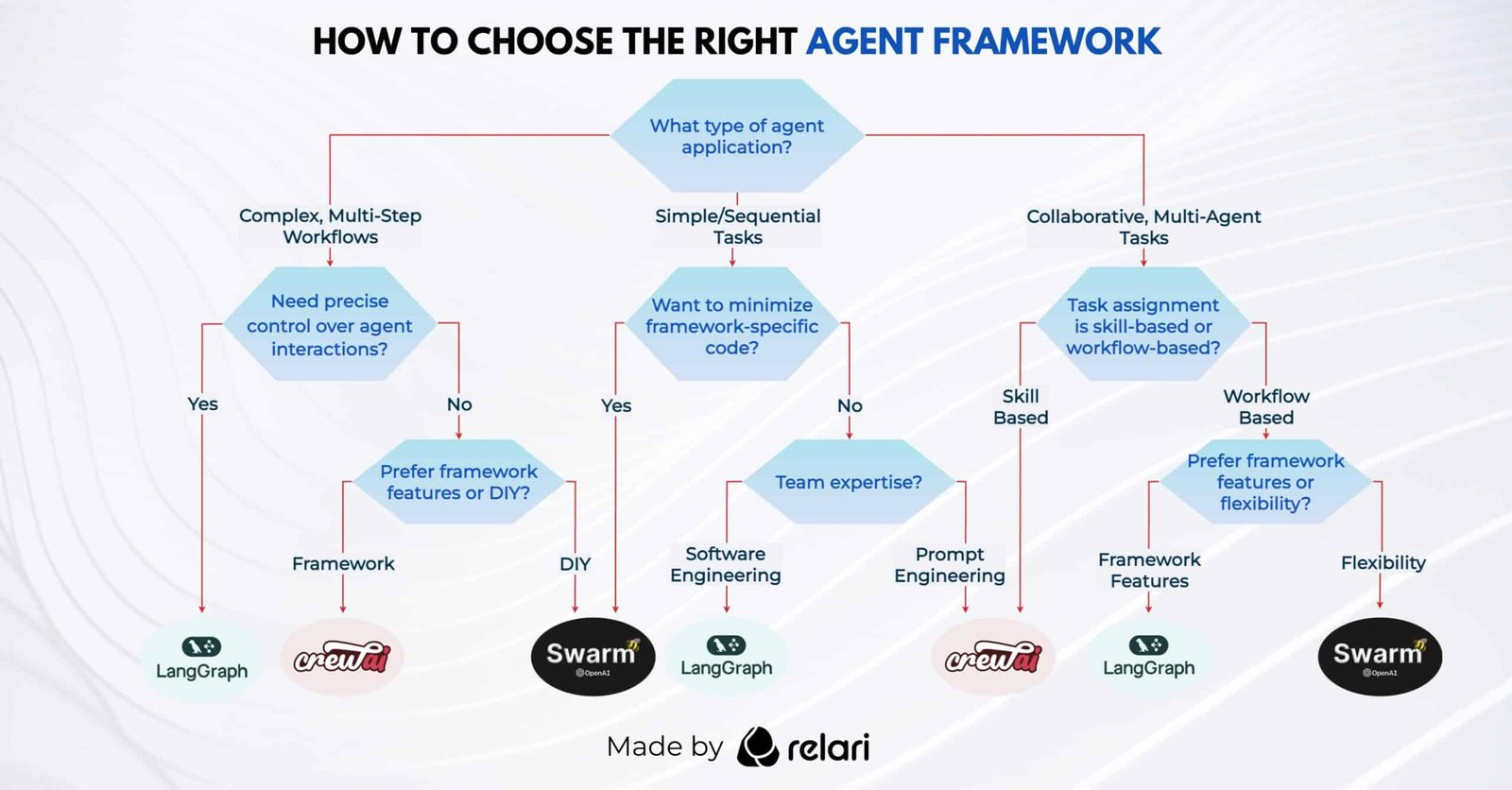
No-Code Agentic AI Frameworks
For non-technical users, marketers, salespeople, and business professionals who want to leverage agentic AI without writing code, no-code platforms provide powerful visual interfaces for building sophisticated AI workflows.
1. n8n: Open-Source Automation Platform
n8n has gained significant popularity as a versatile, open-source automation platform that now includes robust AI agent capabilities. Its visual, node-based interface makes it accessible to users with varying technical backgrounds.
n8n’s Key Advantages:
- Open-source with self-hosting options
- Visual workflow designer with drag-and-drop interface
- Extensive integration ecosystem (400+ apps)
- AI-native capabilities with agent nodes
- Cost-effective for small to medium businesses
With n8n, you can create complex AI workflows by connecting different services visually. For example, you might create a workflow that monitors your email, processes inquiries using AI agents, and automatically responds or routes requests to appropriate team members.
The platform’s strength lies in its ability to integrate AI capabilities with existing business processes, making it particularly valuable for organizations looking to gradually introduce AI automation into their operations.
2. Make.com: Enterprise-Ready Automation
Make.com (formerly Integromat) offers a sophisticated no-code platform with advanced AI agent capabilities. It’s particularly well-suited for enterprise environments that require robust automation with professional support.
Make.com’s Enterprise Features:
- Advanced visual scenario builder
- Enterprise-grade security and compliance
- Comprehensive API integrations
- Advanced error handling and monitoring
- Professional support and SLA options
According to Make.com’s platform, users can integrate with popular platforms like HubSpot, Outlook, and various AI models including Anthropic and Google Gemini. The platform also supports database connections to systems like PostgreSQL, enabling comprehensive business process automation.
Make.com’s visual interface allows users to create complex workflows by connecting different modules, each representing a specific action or integration. This approach makes it possible to build sophisticated AI-powered automation without any programming knowledge.
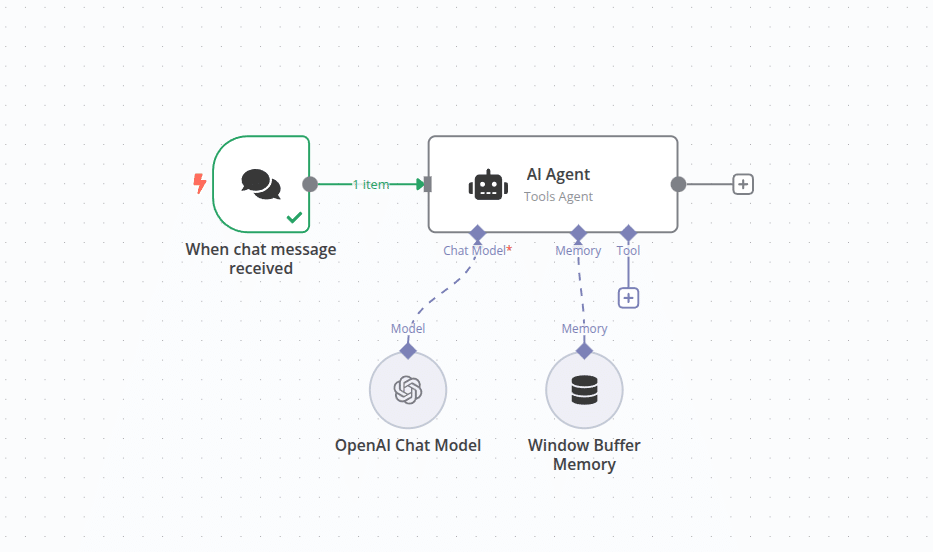
Framework Comparison and Selection Guide
Choosing the right agentic AI framework depends on several factors including your technical expertise, project requirements, team size, and long-term strategic goals. Here’s a comprehensive comparison to help guide your decision.
| Framework | Type | Key Strength | Learning Curve | Best For | Performance |
|---|---|---|---|---|---|
| Agno | Code-based | Speed & Simplicity | Easy | Fast prototyping, lightweight agents | Excellent |
| LangGraph | Code-based | Complex workflows | Medium | Multi-step processes, state management | Good |
| CrewAI | Code-based | Multi-agent collaboration | Medium | Team-based AI solutions | Good |
| Google ADK | Code-based | GCP integration | Medium | Google ecosystem users | Good |
| OpenAI ADK | Code-based | OpenAI integration | Medium | OpenAI ecosystem users | Good |
| n8n | No-code | Open-source flexibility | Easy | SMB automation, cost-conscious users | Good |
| Make.com | No-code | Enterprise features | Easy | Enterprise automation, professional support | Good |
Decision Matrix: When to Choose Each Framework
Choose Agno if you need:
- Ultra-fast agent development and execution
- Minimal learning curve and quick prototyping
- Lightweight solutions with excellent performance
- Simple, single-agent applications
Choose LangGraph if you need:
- Complex, multi-step workflows with state management
- Robust error handling and retry mechanisms
- Integration with the broader LangChain ecosystem
- Enterprise-grade reliability and maturity
Choose CrewAI if you need:
- Multiple specialized agents working together
- Role-based agent orchestration
- Collaborative intelligence for complex tasks
- Clear separation of concerns between agents
Choose No-Code Solutions (n8n/Make.com) if you need:
- Visual, drag-and-drop development
- Non-technical team members to build AI workflows
- Rapid business process automation
- Integration with existing business tools
Performance Considerations and Best Practices
When evaluating agentic AI frameworks, performance considerations extend beyond just execution speed. Factors such as resource utilization, scalability, maintenance requirements, and total cost of ownership all play crucial roles in framework selection.
Performance Metrics to Consider:
- Response Time: How quickly agents can process requests and generate responses
- Throughput: The number of concurrent requests the system can handle
- Resource Utilization: Memory, CPU, and network usage patterns
- Scalability: Ability to handle increased load and complexity
- Reliability: System uptime and error recovery capabilities
Based on community benchmarks and performance reports, Agno consistently demonstrates superior performance metrics, particularly in scenarios requiring rapid agent instantiation and execution. This makes it an excellent choice for applications where speed is a critical factor.
For organizations prioritizing AI development efficiency, understanding these performance characteristics is essential for making informed decisions about framework adoption.
Integration with Existing Systems
Modern agentic AI frameworks must integrate seamlessly with existing business systems, APIs, and data sources. This integration capability often determines the practical success of an AI implementation.
Common Integration Patterns:
- API Integration: Connecting with REST APIs, GraphQL endpoints, and webhooks
- Database Connectivity: Direct integration with SQL and NoSQL databases
- Cloud Services: Integration with AWS, Google Cloud, and Azure services
- Enterprise Systems: Connection to CRM, ERP, and other business applications
- Communication Platforms: Integration with Slack, Teams, email systems
The choice of framework often depends on how well it supports your existing technology stack. For instance, if your organization heavily uses Google Cloud services, the Google ADK might provide the most seamless integration experience.
Security and Compliance Considerations
As agentic AI systems often handle sensitive data and make autonomous decisions, security and compliance become paramount concerns. Different frameworks offer varying levels of security features and compliance support.
Key Security Features to Evaluate:
- Data Encryption: End-to-end encryption for data in transit and at rest
- Access Control: Role-based access control and authentication mechanisms
- Audit Logging: Comprehensive logging of agent actions and decisions
- Compliance Support: Built-in support for GDPR, HIPAA, SOC 2, and other standards
- Secure Deployment: Support for secure deployment environments
Enterprise-focused frameworks like Google ADK and OpenAI ADK typically offer more comprehensive security features, while open-source solutions like n8n provide transparency and the ability to implement custom security measures.
Cost Analysis and ROI Considerations
The total cost of ownership for agentic AI frameworks includes not just licensing fees, but also development time, maintenance costs, infrastructure requirements, and ongoing operational expenses.
| Framework | Licensing Model | Development Cost | Maintenance Effort | Infrastructure Requirements |
|---|---|---|---|---|
| Agno | Open Source | Low | Low | Minimal |
| LangGraph | Open Source | Medium | Medium | Moderate |
| CrewAI | Open Source | Medium | Medium | Moderate |
| Google ADK | Usage-based | Medium | Low | Google Cloud |
| OpenAI ADK | Usage-based | Medium | Low | OpenAI Platform |
| n8n | Freemium | Low | Low | Flexible |
| Make.com | Subscription | Low | Low | Cloud-based |
Future Trends and Considerations
The agentic AI landscape is rapidly evolving, with new frameworks, features, and capabilities emerging regularly. Understanding current trends can help inform long-term strategic decisions.
Emerging Trends:
- Multimodal Capabilities: Integration of text, image, audio, and video processing
- Advanced Reasoning: Improved logical reasoning and problem-solving capabilities
- Autonomous Learning: Agents that can learn and adapt from experience
- Ethical AI: Built-in safeguards and ethical decision-making frameworks
- Edge Deployment: Ability to run agents on edge devices and local environments
As the field continues to evolve, frameworks that demonstrate adaptability and extensibility are likely to provide the best long-term value. This is particularly relevant for organizations making strategic investments in AI infrastructure.
For professionals interested in staying current with these developments, exploring AI training opportunities can provide valuable insights into emerging trends and best practices.
Getting Started: Step-by-Step Implementation Guide
Regardless of which framework you choose, successful implementation follows a similar pattern of assessment, planning, development, and deployment.
Phase 1: Assessment and Planning
- Define Requirements: Clearly articulate what you want your AI agents to accomplish
- Assess Technical Capabilities: Evaluate your team’s technical skills and available resources
- Identify Integration Points: Determine how agents will interact with existing systems
- Establish Success Metrics: Define measurable outcomes for your AI implementation
Phase 2: Framework Selection and Setup
- Evaluate Options: Use the comparison matrix to narrow down suitable frameworks
- Prototype Development: Build small proof-of-concept implementations
- Performance Testing: Validate that the framework meets your performance requirements
- Security Assessment: Ensure the framework meets your security and compliance needs
Phase 3: Development and Testing
- Iterative Development: Build your agent system incrementally
- Comprehensive Testing: Test agents across various scenarios and edge cases
- User Acceptance Testing: Validate that the system meets end-user needs
- Performance Optimization: Fine-tune the system for optimal performance
Phase 4: Deployment and Monitoring
- Staged Deployment: Deploy in phases to minimize risk
- Monitoring Setup: Implement comprehensive monitoring and alerting
- User Training: Ensure users understand how to interact with the AI agents
- Continuous Improvement: Regularly assess and improve agent performance
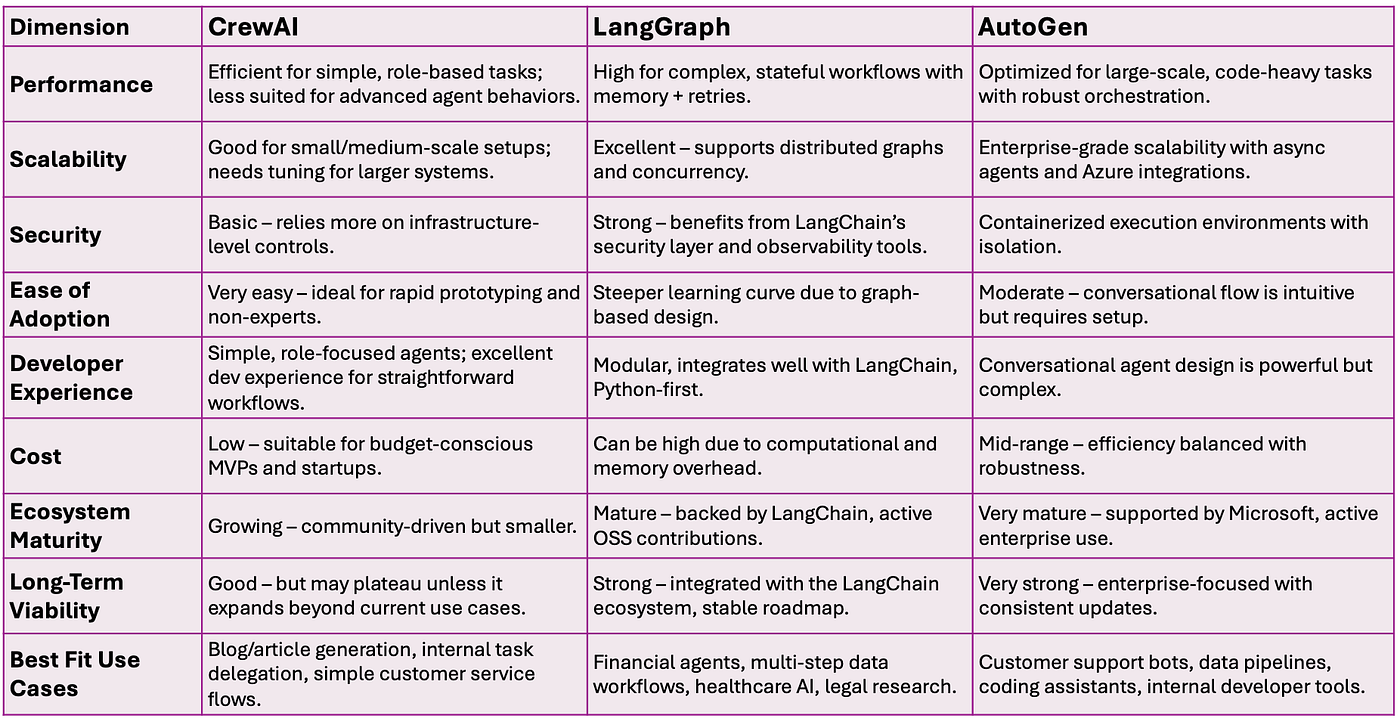
Learning Resources and Community Support
Success with agentic AI frameworks often depends on having access to quality learning resources and community support. Each framework has its own ecosystem of documentation, tutorials, and community forums.
Recommended Learning Paths:
For Code-Based Frameworks:
- Agno: Start with the official GitHub repository and community examples
- LangGraph: Begin with LangChain documentation and progress to LangGraph-specific tutorials
- CrewAI: Explore the CrewAI platform and community-contributed examples
For No-Code Frameworks:
- n8n: Start with the comprehensive n8n documentation and community workflows
- Make.com: Utilize Make.com’s extensive template library and video tutorials
Building expertise in agentic AI is increasingly valuable in today’s job market. Understanding how AI is transforming the job landscape can help professionals position themselves effectively for emerging opportunities.
Framework Selection Summary
For Speed and Simplicity: Choose Agno if you need ultra-fast agent development with minimal complexity.
For Complex Workflows: Choose LangGraph if you need sophisticated state management and multi-step processes.
For Multi-Agent Systems: Choose CrewAI if you need multiple specialized agents working collaboratively.
For Ecosystem Integration: Choose Google ADK or OpenAI ADK if you’re deeply integrated with their respective platforms.
For Non-Technical Users: Choose n8n or Make.com if you need visual, drag-and-drop development capabilities.
Frequently Asked Questions (FAQ)
1. What is an agentic AI framework?
Agentic AI frameworks provide tools and structure to build intelligent agents that can reason, plan, and act autonomously. These frameworks handle memory, decision logic, tool use, and workflows—making them ideal for building assistants, research bots, or multi-agent systems.
2. Which is the best agentic AI framework for beginners?
If you're new to coding, N8N and Make.com are great no-code platforms. For developers, Agno offers the fastest and easiest way to start with one-line agent setup, while LangGraph provides more control for building advanced workflows.
3. How do I choose between LangGraph, CrewAI, and Agno?
Choose LangGraph if you need custom, stateful workflows with retry and memory features.
Use CrewAI when you're building systems with multiple agents collaborating.
Go with Agno for speed, simplicity, and vendor-agnostic tool support.
Conclusion
The choice of agentic AI framework ultimately depends on your specific requirements, technical capabilities, and strategic objectives. Each framework offers unique strengths and is optimized for different use cases.
For organizations just beginning their journey with agentic AI, starting with simpler frameworks like Agno or n8n can provide quick wins and valuable learning experiences. As requirements become more complex, evolving to more sophisticated frameworks like LangGraph or CrewAI becomes a natural progression.
The key to success lies in understanding your current needs while keeping an eye on future requirements. The agentic AI landscape will continue to evolve rapidly, and choosing frameworks that offer flexibility, strong community support, and regular updates will position your organization for long-term success.
Remember that the best framework is the one that enables your team to build effective AI agents that solve real business problems. Focus on practical outcomes rather than theoretical capabilities, and don’t hesitate to experiment with multiple frameworks to find the best fit for your organization.
As we move forward into 2025 and beyond, agentic AI will continue to transform how we approach problem-solving and automation. By choosing the right framework and building the necessary expertise, organizations can harness this powerful technology to drive innovation and competitive advantage.
For those looking to dive deeper into the world of AI development, exploring advanced AI protocols and staying current with the latest developments in the field will be essential for continued success.
Stay updated with the latest developments in AI by following AI Insider Daily for comprehensive coverage of emerging technologies and frameworks.

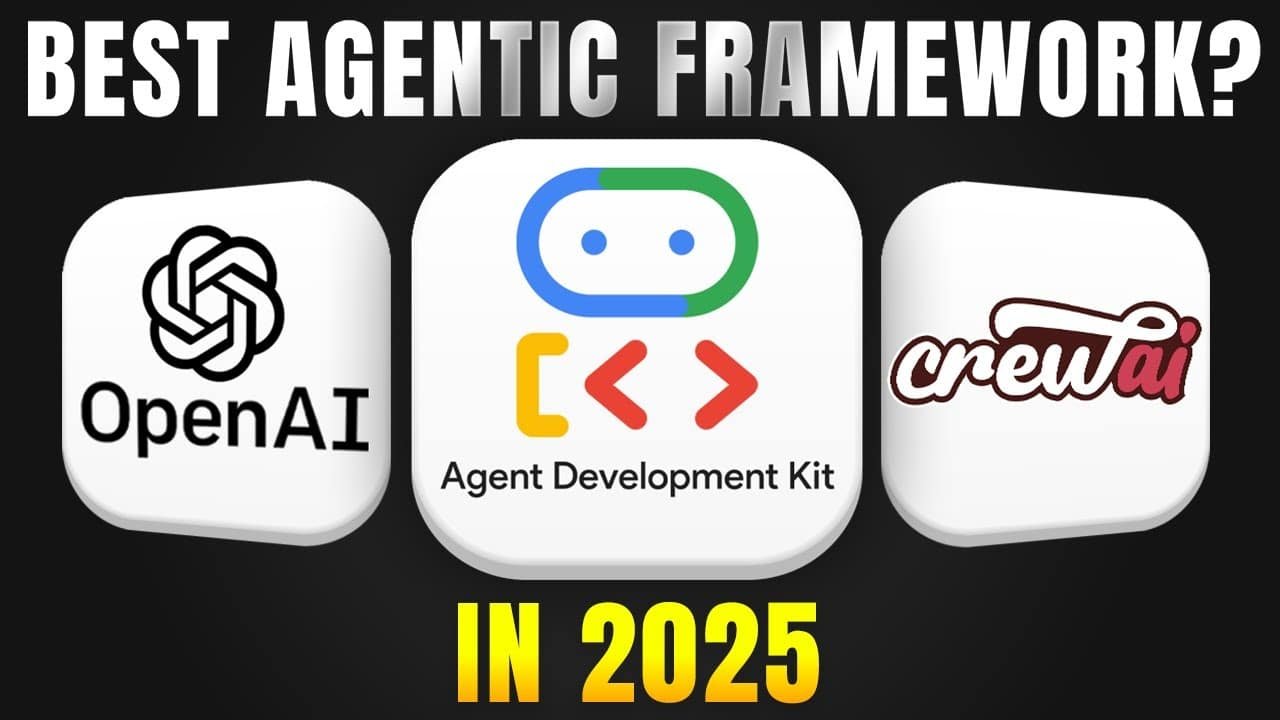
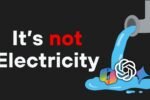

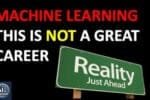

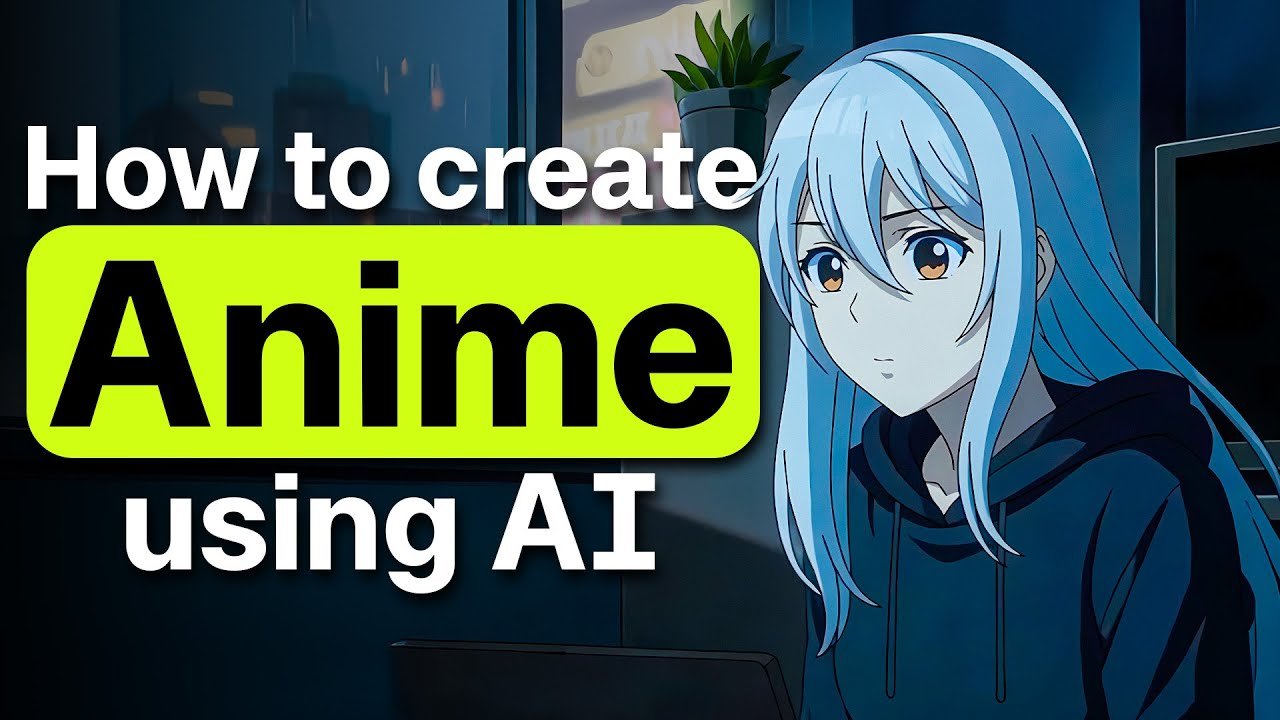

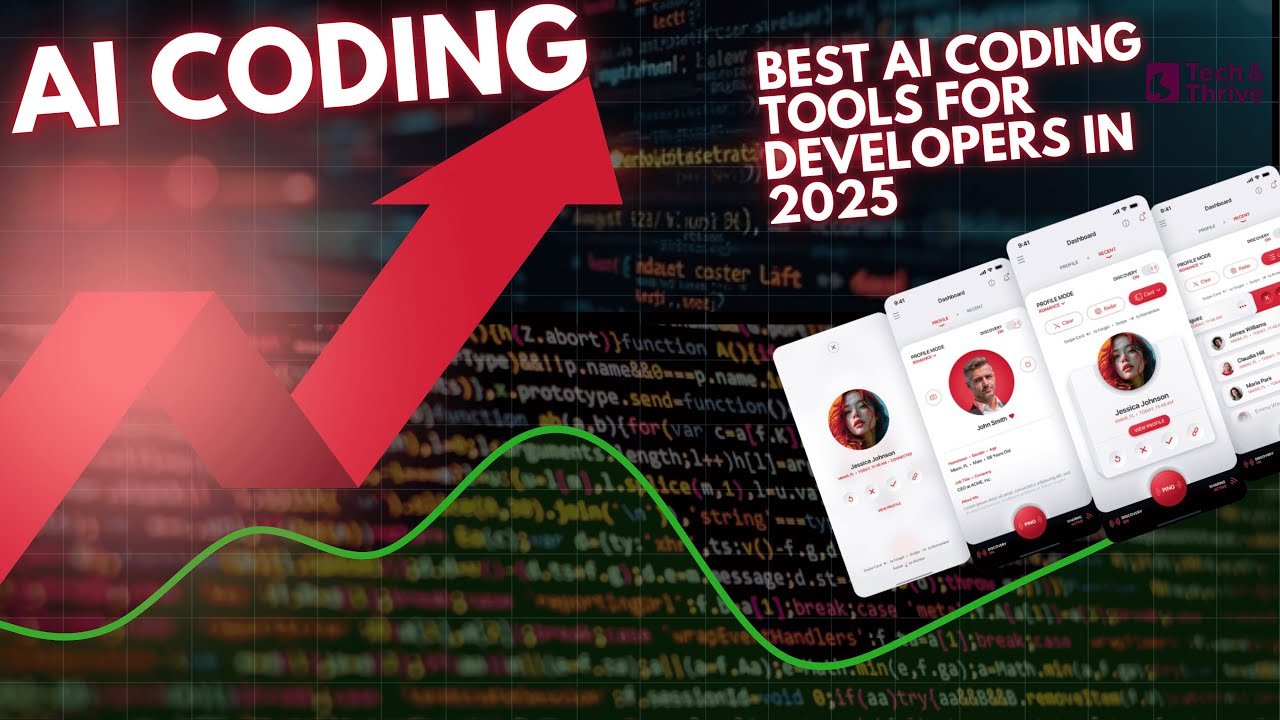
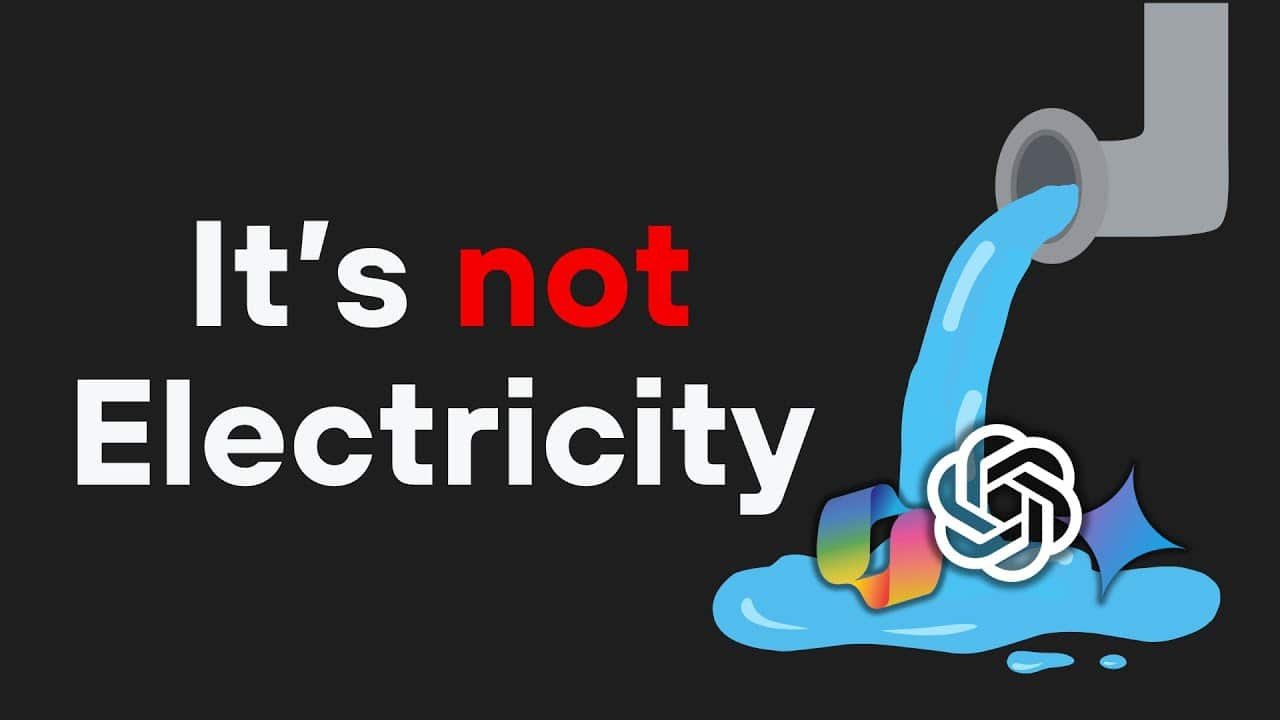
Your blog is a testament to your expertise and dedication to your craft. I’m constantly impressed by the depth of your knowledge and the clarity of your explanations. Keep up the amazing work!
Wow wonderful blog layout How long have you been blogging for you make blogging look easy The overall look of your site is great as well as the content
Hi my family member I want to say that this post is awesome nice written and come with approximately all significant infos I would like to peer extra posts like this
Your blog is a testament to your expertise and dedication to your craft. I’m constantly impressed by the depth of your knowledge and the clarity of your explanations. Keep up the amazing work!
Fantastic site A lot of helpful info here Im sending it to some buddies ans additionally sharing in delicious And naturally thanks on your sweat
Your blog is a treasure trove of valuable insights and thought-provoking commentary. Your dedication to your craft is evident in every word you write. Keep up the fantastic work!
Thank you I have just been searching for information approximately this topic for a while and yours is the best I have found out so far However what in regards to the bottom line Are you certain concerning the supply
Usually I do not read article on blogs however I would like to say that this writeup very compelled me to take a look at and do so Your writing taste has been amazed me Thanks quite nice post
Good info and straight to the point. I am not sure if this is actually the best place to ask but do you guys have any thoughts on where to employ some professional writers? Thanks 🙂
I appreciate, cause I found exactly what I was looking for. You’ve ended my 4 day long hunt! God Bless you man. Have a great day. Bye
Hi there, You’ve done an excellent job. I will definitely digg it and personally suggest to my friends. I am confident they’ll be benefited from this website.
Life is hard, so enjoy every day as it comes!helloboy1979@gmail.com
I have read some excellent stuff here Definitely value bookmarking for revisiting I wonder how much effort you put to make the sort of excellent informative website